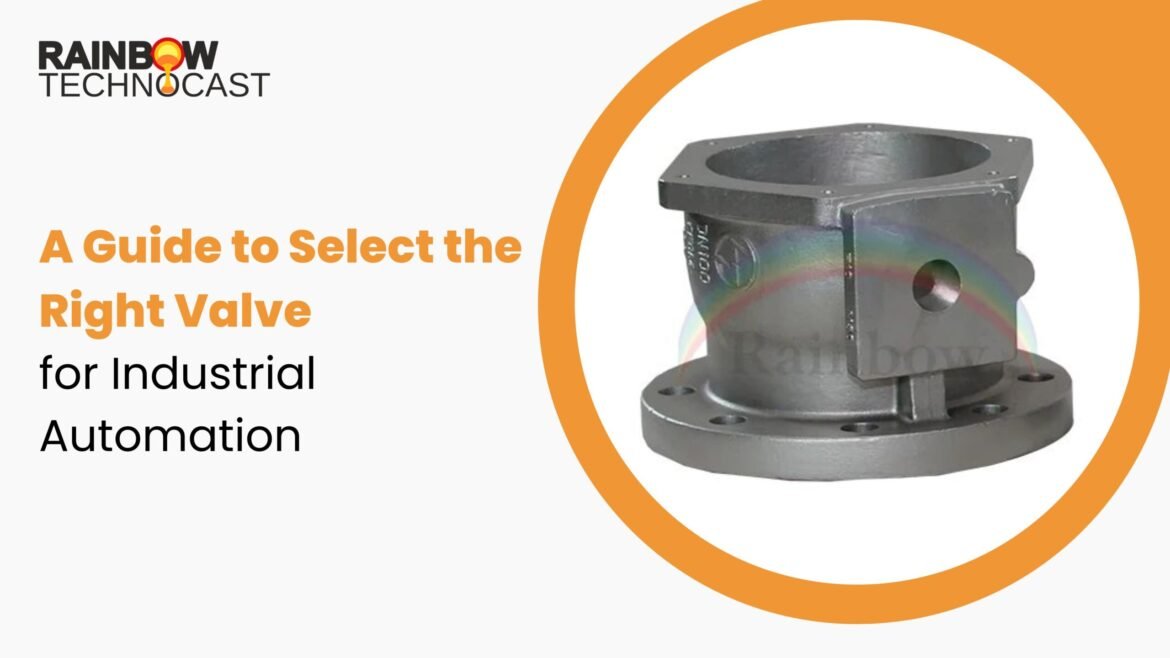A single valve failure in a pharmaceutical manufacturing line can cost $50,000 per hour. In petrochemical plants, it’s closer to $200,000. Yet most engineers treat valve selection as a commodity decision—a dangerous oversimplification that ignores the reality that precision begins at the casting stage, not the assembly line.
The difference between a valve that performs and one that fails isn’t just in the design—it’s in the metallurgical integrity, dimensional fidelity, and surface finish of every cast component. When automated systems demand microsecond response times and zero-failure tolerance, the foundational engineering becomes everything.
Valve Selection: Getting the Basics Right
Contents
Ball valves dominate tight shutoff applications. Butterfly valves excel in large-diameter, low-pressure scenarios. Gate valves handle isolation duties. Globe valves provide precise throttling. Check valves prevent backflow catastrophes.
The function seems straightforward until you realize that a ball valve’s sealing effectiveness depends entirely on the spherical accuracy of its cast body—deviations as small as 0.001 inches can compromise sealing integrity. The dimensional fidelity and surface finish of cast components don’t just influence valve functions; they determine whether the valve functions at all under demanding conditions.
Key Criteria That Drive Valve Selection
Media Compatibility: Beyond the Obvious
Abrasive media demands hardened surfaces. Corrosive chemicals require specific alloy compositions. Viscous fluids need optimized flow geometries. But here’s what most selection guides miss: the casting process itself determines material compatibility.
Investment casting enables complex internal geometries that accommodate challenging media while maintaining structural integrity. The ability to cast near-net-shape components from certified alloys—with full traceability and material testing—becomes critical when dealing with hydrogen embrittlement, chloride stress corrosion, or high-temperature creep.
Pressure and Temperature: The Casting Advantage
Standard valve bodies often require extensive machining from forgings, introducing stress concentrations. Precision casting eliminates these weak points by creating uniform grain structures and optimal wall thickness distributions that handle extreme conditions without compromise.
Valve Body Construction: Forged, Machined, or Cast?
Forged components offer strength but limit geometric complexity. Machined parts provide precision but waste material and time. Cast components deliver the optimal balance—when executed correctly.
Here’s where casting superiority becomes undeniable:
Net-shape complexity eliminates 60-80% of secondary machining operations. Near-zero porosity through vacuum and shell process control ensures leak-proof performance. ISO-certified dimensional repeatability guarantees consistent assembly and function across production runs.
The real advantage? Faster turnaround for design iterations. When automation systems evolve rapidly, the ability to prototype, test, and scale custom valve geometries becomes a competitive weapon.
Advanced Use Cases in Industrial Automation
Smart control loops require valves that respond in milliseconds. IIoT-ready actuation demands compact, integrated designs. Custom geometries enable space-constrained installations that standard components can’t accommodate.
Custom castings enable complex internal flow paths that would be impossible to machine economically. Bespoke housings integrate multiple functions into single components. These aren’t just cost optimizations—they’re engineering solutions that make next-generation automation systems possible.
The Hidden Cost of Bad Valve Components
Micro-cracks in cast bodies propagate under pressure cycling, leading to catastrophic failures. Porous castings allow internal leakage that degrades control precision. Mismatched alloys create galvanic corrosion that accelerates wear.
The hidden costs multiply:
- Downtime: $50,000-$200,000 per hour in critical applications
- Rework: 15-25% of rejected assemblies trace back to casting defects
- Warranty claims: Poor castings account for 40% of premature valve failures
Zero-defect assurance through PPAP validation and complete traceability systems eliminates these risks. When every casting undergoes non-destructive testing and material verification, the cost of quality becomes far less than the cost of failure.
Collaboration over Commodity
Off-the-shelf valve components don’t suit evolving automation needs. The future belongs to co-engineering relationships with casting experts who understand both metallurgy and application requirements.
The right manufacturing partner provides:
- Design for Manufacturing (DFM) inputs that optimize castability and performance
- Early-stage prototyping for rapid concept validation
- Dedicated foundry lines for consistent quality and scalable production
This vendor management accelerates innovation while reducing risk.
Selection Summary
| Valve Type | Best Media | Material Focus | Actuation |
| Ball | Clean liquids/gases | Stainless steel, exotic alloys | Quarter-turn |
| Butterfly | Large volume, low pressure | Ductile iron, bronze | Quarter-turn |
| Gate | Isolation service | Carbon steel, stainless | Linear |
| Globe | Throttling control | High-temp alloys | Linear |
| Check | Backflow prevention | Corrosion-resistant | Automatic |
Bottom Note
Every valve serves a different purpose, but they all share one requirement: casting precision is non-negotiable. Whether it’s a simple ball valve or a complex multi-port assembly, the difference between reliable performance and costly failure lies in the foundational engineering—the metallurgical integrity, dimensional accuracy, and surface quality that only precision casting can deliver.
The valve may be the component that controls your process, but the casting is what controls your valve’s destiny.
Ready to explore custom casting solutions for your valve applications? Book a free component feasibility assessment with Rainbow Technocast engineers and discover how precision casting can transform your automation systems.



